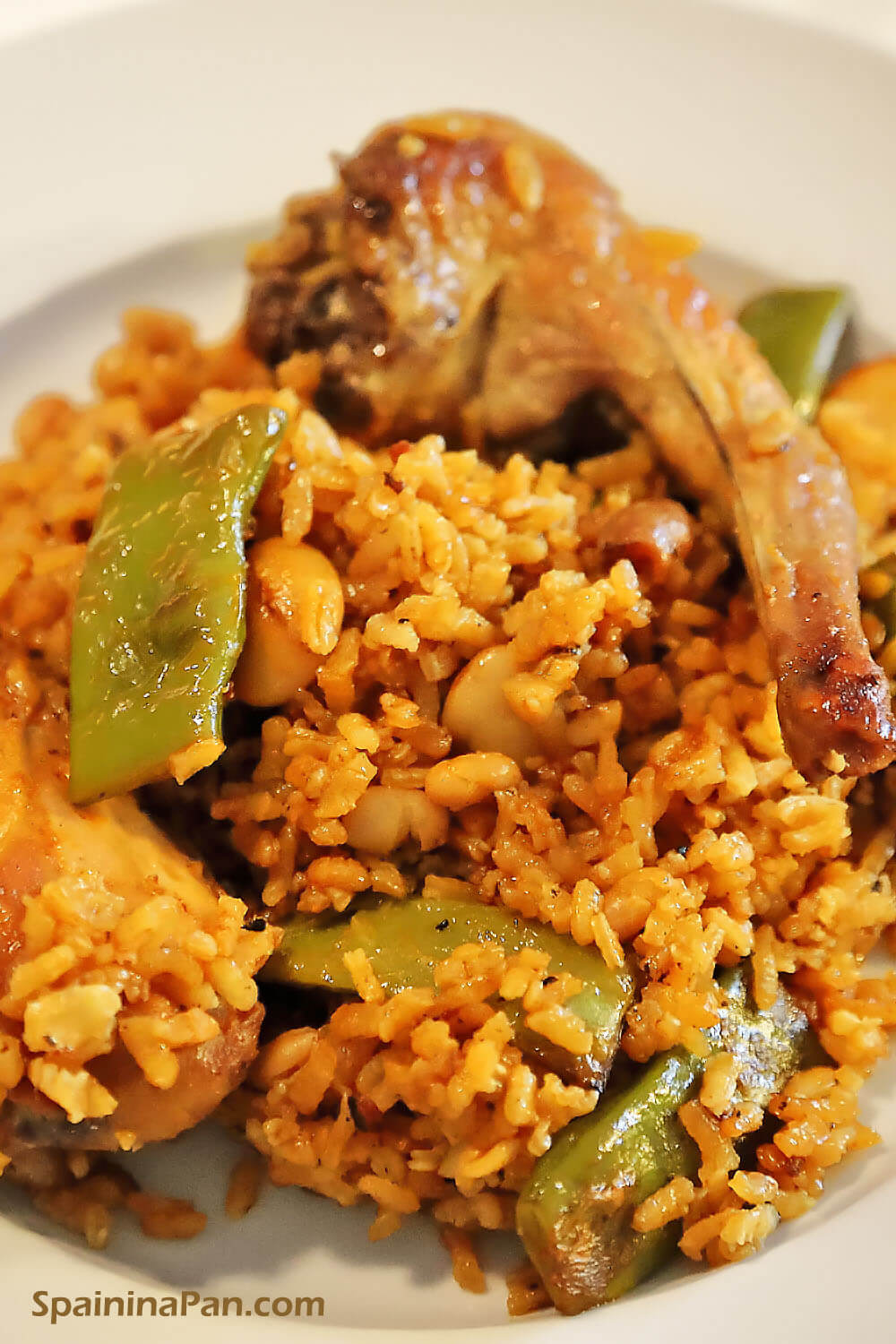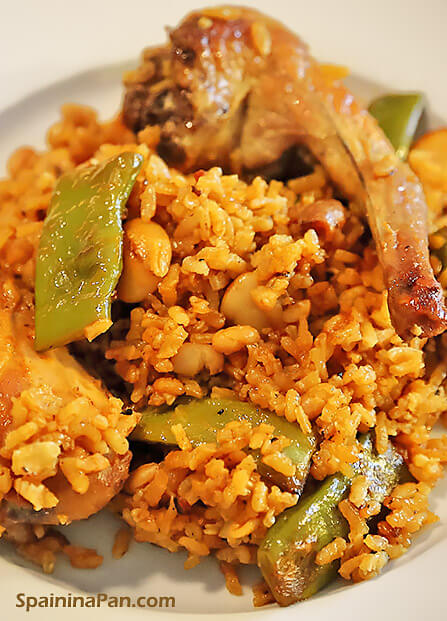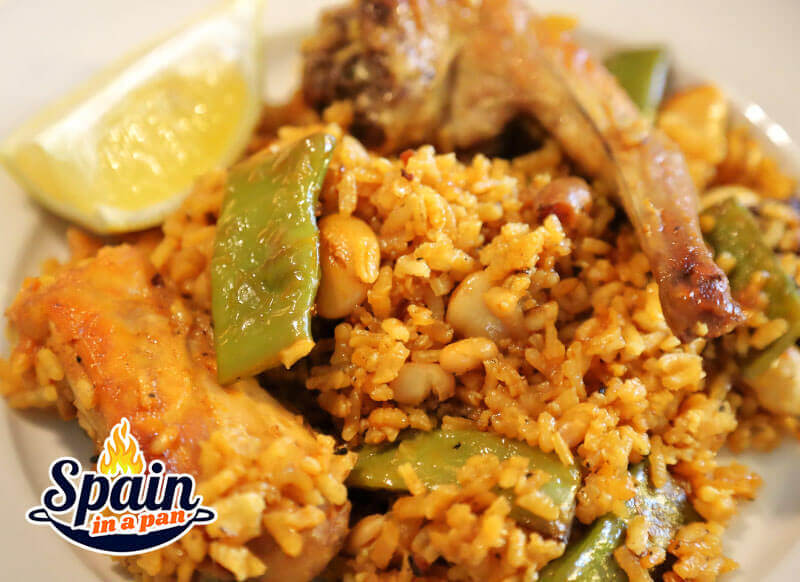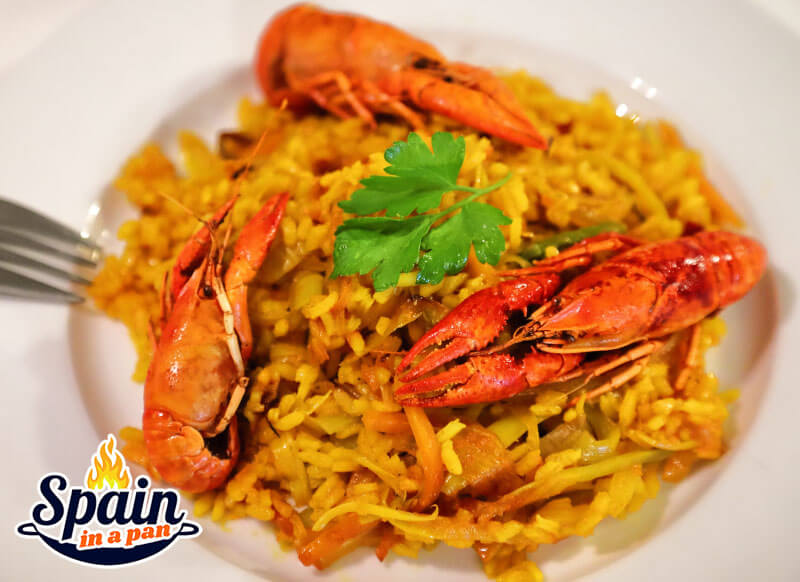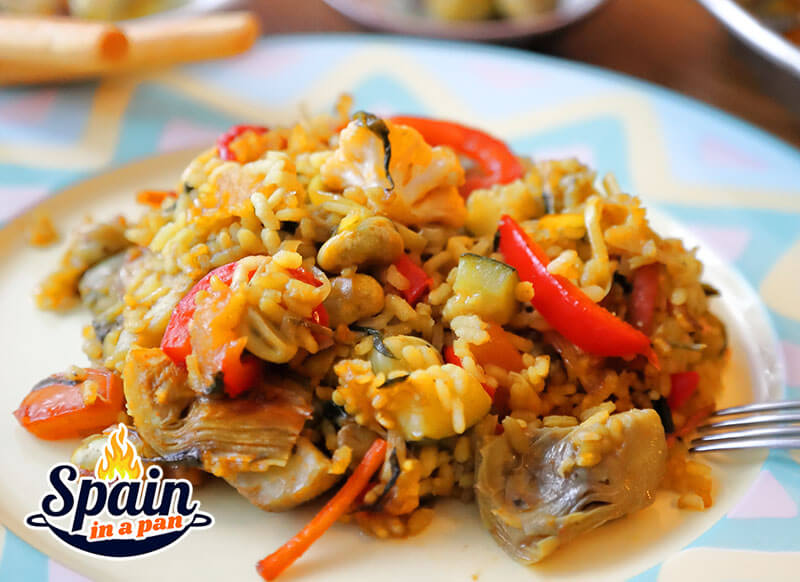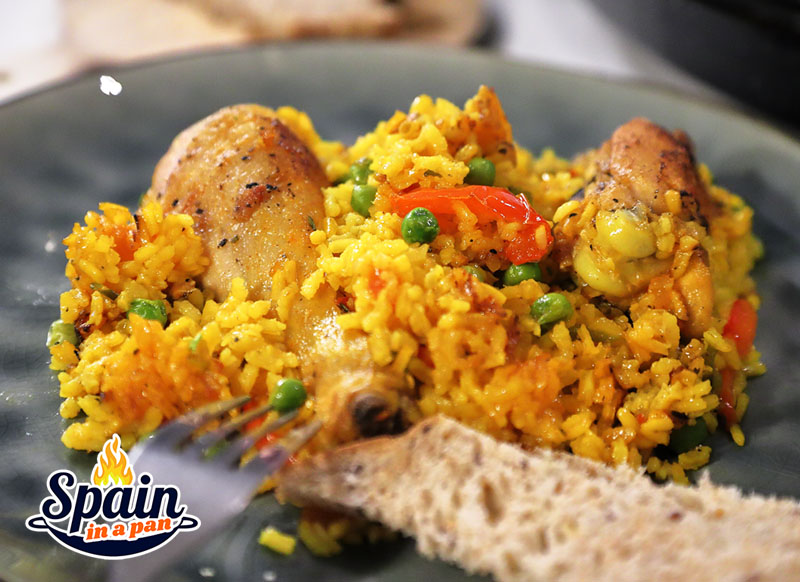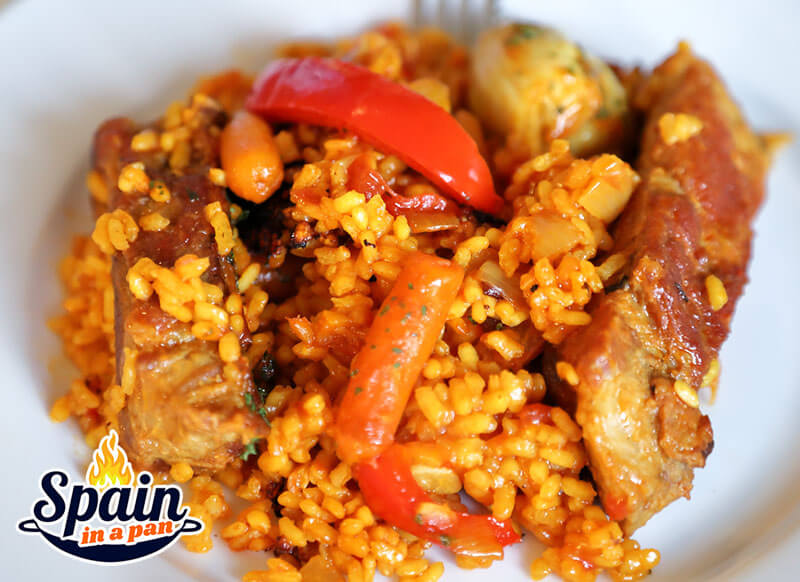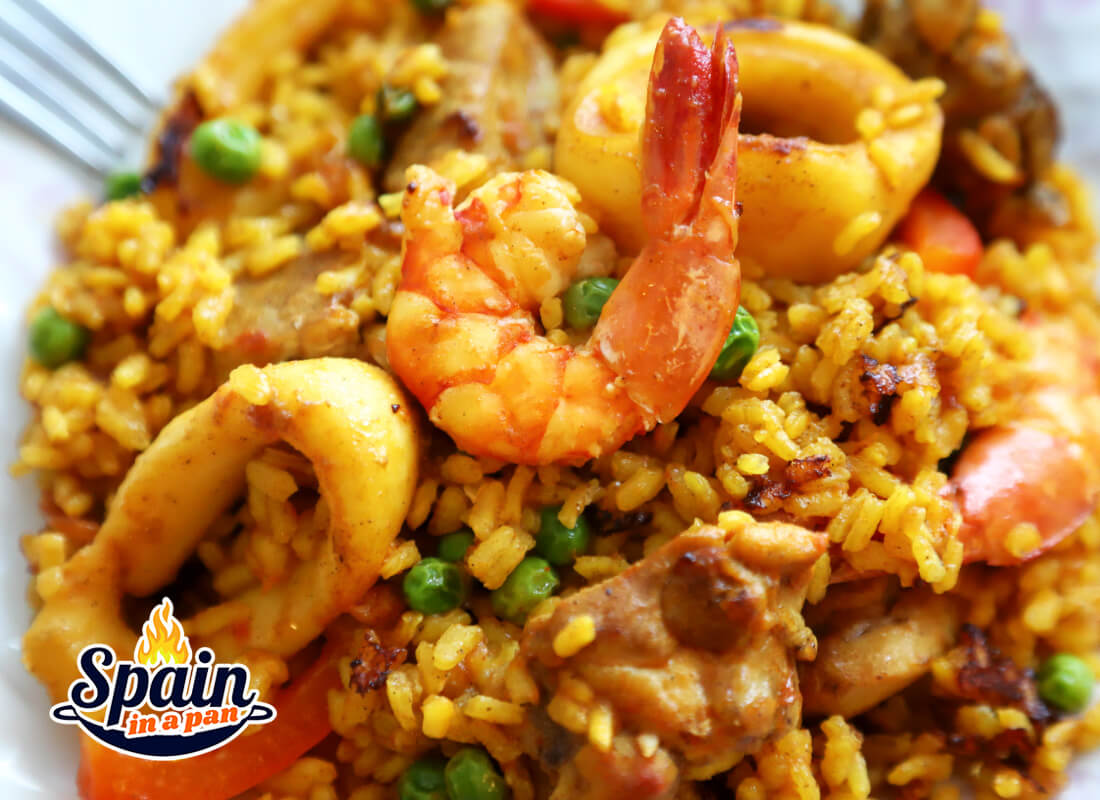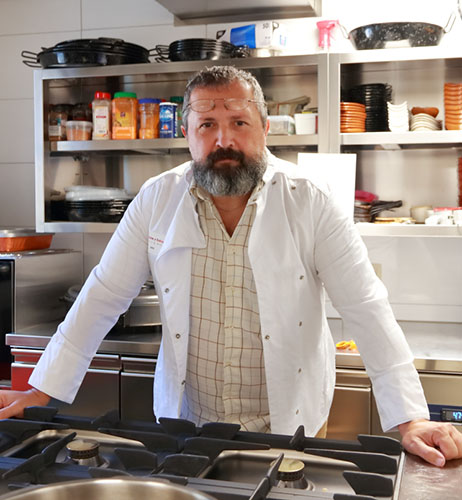- HOME
- Paella Recipes
- Paella Valenciana
The Authentic Paella Valenciana Recipe
(Paella Valenciana)
By Edu Valor / Author - Spanish Chef
World-famous and controversial in Spain—that’s what the authentic paella Valenciana recipe is. Every town seems to have its own mix of ingredients.
It’s probably the most debated topic both in and outside the country—and you’d understand why if you saw the dishes.
The tradition around the paella culture lacked authenticity but they did something about it, as described below.
I sometimes smile when Mediterranean pride shines through, especially for something like a national dish.
You see this same trait with our French and Italian friends too. I find it interesting. It shows a shared passion, and we wouldn’t want it any other way.
Listen! The ingredients for paella have always been flexible, even in the old days. So how do you protect paella Valenciana if it’s not clearly defined?
You involve people from 266 towns in Valencia to see how they make it. Today, there are 10 essential ingredients and several optional ones to help preserve the tradition.
Here’s the thing: there isn’t a single, definitive paella Valenciana recipe. In fact, it’s estimated there are around 200 variations.
Every town has its own version. While they’re not drastically different, you can still recognize them as paella Valenciana.
Families often use whatever is locally available, whether from their kitchen or their region. For me, snails aren’t always on hand. Interestingly, studies show they’re not the most common ingredient anyway.
Let's make an Authentic Paella
Ingredients for 4 servings
Preparation: 15 minutes
Cooking: 18 minutes for the Bomba rice, approx. 45 minutes to 1 hour total.
*Measurements in metric and USA Imperial system. For British/Canadian measurements please use the metric conversion calculator.
Use preferably fresh or frozen white beans. Dry beans need to be soaked at least 12 hours or overnight and boiled for 15 minutes. When done, drain and rinse thoroughly. Canned/jarred bean preserve doesn't need to be soaked!
- 500g/18 oz chicken, cut
- 400g/14 oz rabbit, cut
- 150g/5 oz garrofón beans (white large beans, butter beans are good too)
- 250g/9 oz flat green beans, cut pinky finger long
- 2-3 tsp sea salt
- 1.3L/5.5 cups water
- 150g/ 5 oz tomato puree or cubes
- 4 garlic cloves, minced
- 400g/2 cups Bomba rice
- 15-20 saffron strings or 1 tsp yellow food dye
- 2-3 tsp paprika powder
- 12 snails (optional)
- 100ml/ 7.5 tbsp olive oil
Instructions
- Pour oil into the pan and sprinkle salt over it.
- Brown the meat well over medium fire until it's crispy and golden. If using snails, add them at the end of the browning process.
- Lower fire to medium-low. Push the meat (and snails) to the sides of the pan, then add the tomato, garlic, and paprika. Sauté until the tomato juice evaporates completely. This is important for flavor! Some chefs even brown the tomato mixture.
- Add the flat and white beans. Stir everything together with the tomatoes and meat.
- Turn the fire up to medium-high and add the rest of the water. Wait for it to boil.
- Taste the broth and add salt if needed.
- Add the bomba rice and saffron. Spread the ingredients evenly over the pan. Do not stir the rice after this point. Cook for 10 minutes. Reduce the heat to medium-low and cook for another 8 minutes.
- If you want the socarrat, carefully insert a narrow spatula to check the bottom of the pan. Is the rice browned underneath? If not, increase the fire to high and cook for another 90 seconds to 2 minutes.
- Lower the fire. Insert the spatula again to check the rice.
- Turn off the fire and cover the pan with aluminum foil (a clean kitchen towel or cover works too). Let it rest for 5 minutes.
TIPS:
- Sauté the tomato with garlic and paprika well. It'll enhance the taste.
- Adding the salt in the beginning will limit browning of the pan as well as oil splatters.
- Another rice than Bomba may have different cooking time.
- Taste before adding the rice.
- Use meat with bones, it adds taste.
- Bean preserves do NOT need to be soaked.
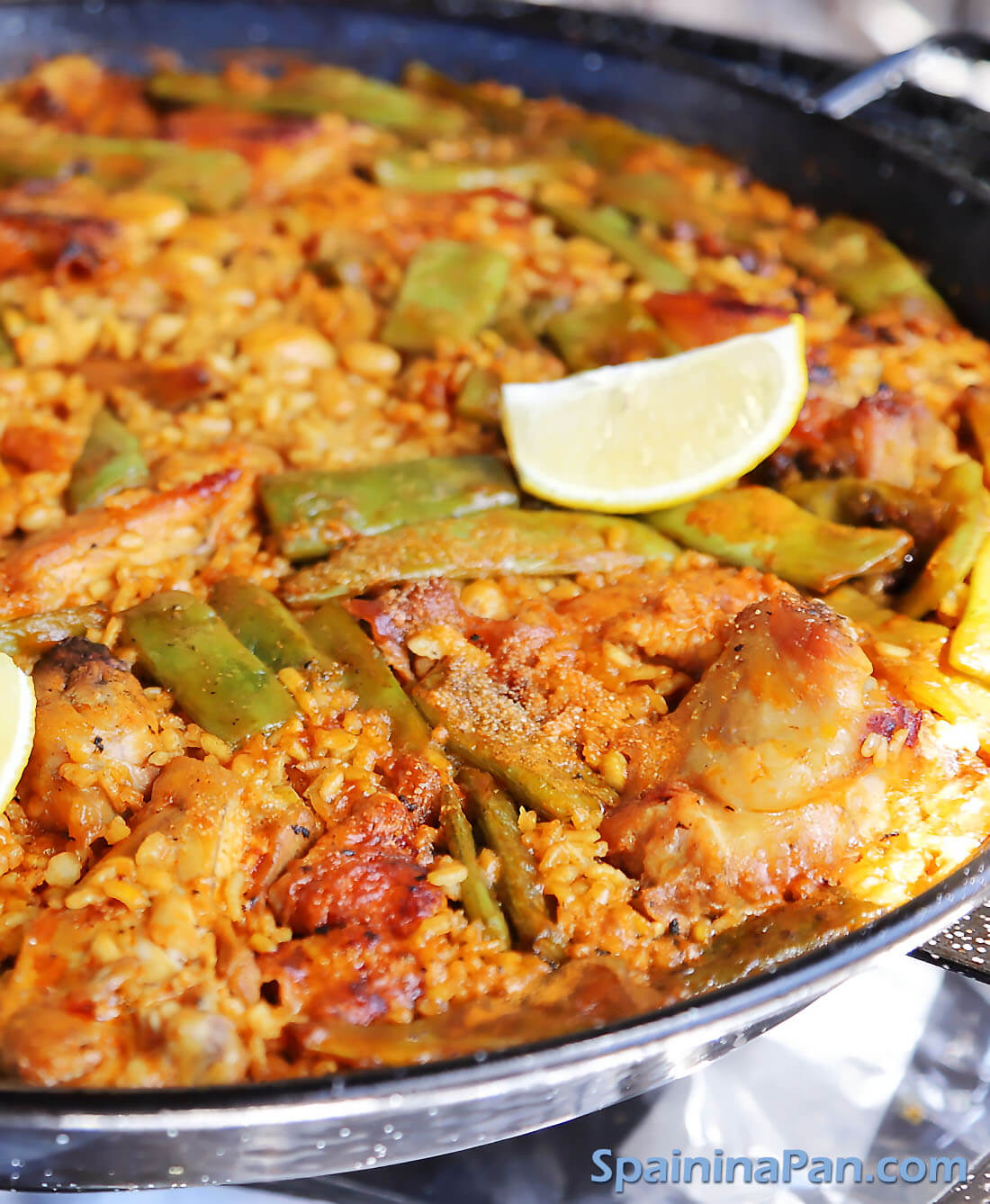 Ready to be enjoyed!
Ready to be enjoyed!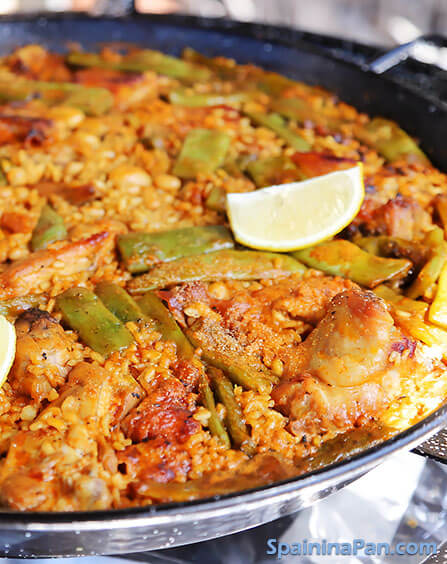 Ready to be enjoyed!
Ready to be enjoyed!
The Scientists' and Chefs' Revenge
The dish was losing its value and tradition, turning into something unrecognizable, which had many professionals concerned.
After all, paella is the quintessential Spanish dish, symbolizing togetherness and celebration. Interestingly, "paella" originally referred to the pan itself, but over time it became the name for the rice dish.
It seems they’d had enough of scattered recipes that lacked authenticity. A push for revival was needed, and research was inevitable. You can find the study here!
Region-wide research conducted by the UCV (Catholic University of Valencia) identified the following essential ingredients:
- Rice (Arroz de Valencia)
- Chicken
- Rabbit
- Saffron (saffron threads also add flavor)
- Garrofón beans (a type of lima bean, similar to butter beans)
- Flat green beans
- Extra virgin olive oil
- Water
- Salt
- Tomato
Additionally, there were 38 commonly used and 50 occasionally used ingredients. These are considered optional but still permitted in an authentic paella Valenciana.
Leaving out snails (a traditional ingredient) doesn’t make the dish any less authentic, as long as you stay true to the essence of this beloved Spanish classic.
Personally, I don’t care for snails unless they’re the smaller ones. However, I do like to enhance my dishes with garlic and paprika.
Again, the ingredient list above represents one way to make authentic paella Valenciana.
In my opinion, they should have also included other traditional recipes, like those with ribs, sausages, and meatballs. These are too good to be left out!
What You Will Need
- A paella pan for 4 servings*
- A paella burner*
- Spatula
- Meat knife
- Paring knife
- Cutting board
- Measuring beaker
*The paella pan with burner can be replaced with an electric paella pan for indoor (or outdoor) cooking. Never use a gas burner indoors unless it has a safety sensor!!
How Difficult is it to Make?
There are a few things to keep in mind if you want to make this authentic paella Valenciana recipe truly delicious.
Making this dish is an art, but fortunately, it's one fairly easy to master. For quick success, be sure to check out the technique tips here. After a couple of times, you'll get the hang of making a good one.
As you may know, recipe steps like these are just guidelines. I don’t know what equipment you’re using, the weather conditions, or the exact ingredients you have on hand. There's a big difference between stale and fresh ingredients.
With some cooking skills and common sense, you'll be able to make a successful and authentic paella Valenciana. You’re the chef!
*****
